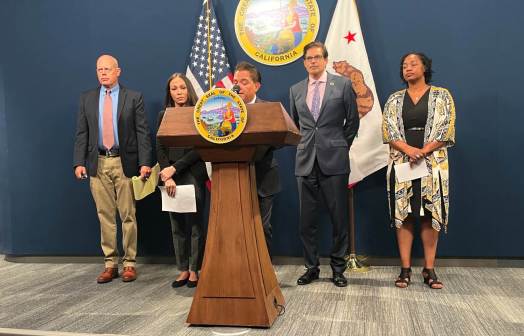Six states score best in new open data report

Hawaii, Illinois, Maryland, New York, Oklahoma and Utah were the top scoring states in a new report from the Center for Data Innovation that looked at how effectively state governments have created and implemented open data policies.
Alabama, Nevada, South Dakota and Wyoming scored the lowest.
The report gives an explanation of why the six states scored as well as they did:
“Each of these states has established an open data policy; only New York did so exclusively by means of executive order; the rest either passed legislation or issued both an executive order and legislation. These states’ policies require their open data portals to publish basic government data, such as expenditure information, as well as other agency data. They also require that the data be published in a machine-readable format. The corresponding portals contain extensive catalogs of open data, are relatively simple to navigate, and provide data in machine-readable formats. The portals also provide links to APIs to download particular data and have other information designed specifically for developers looking to build applications using the data,” it said.
Connecticut and Texas came in next on the list, but received slightly lower scores because Connecticut’s policy does not require machine readability, while Texas’s policy does not require data beyond expenditures.
In a third group next on the list, Rhode Island’s policy requires neither machine readability nor government data beyond expenditures, while New Hampshire’s policy requires machine readability and many types of data, but its open data portal is not yet fully functional.
For the middle-ranked states, such as California, Michigan and Missouri, each had open data portals but no clear open data policies that would provide opportunities for the states to require, for example, that the data be machine-readable or require participation from all state agencies.
Of the bottom 20 states on the sheet, three have large cities that have already established their own open data policies and portals that could make it an easier transition for their state governments to use a model.
In conclusion, the report reads:
“Given the significant opportunities that open data presents, all states should be developing open data policies and portals as an initial step towards greater use of open data. States creating new open data policies or portals, or refreshing old ones, have many opportunities to learn from the experiences of early adopters. One option for states planning to legislate in this area is to amend their existing transparency policies to form open data policies, thereby modernizing already effective statutes. For example, Utah’s 2014 legislation established an open data policy and portal by amending the duties required of the Utah Transparency Advisory Board and Utah Public Finance Website.”






